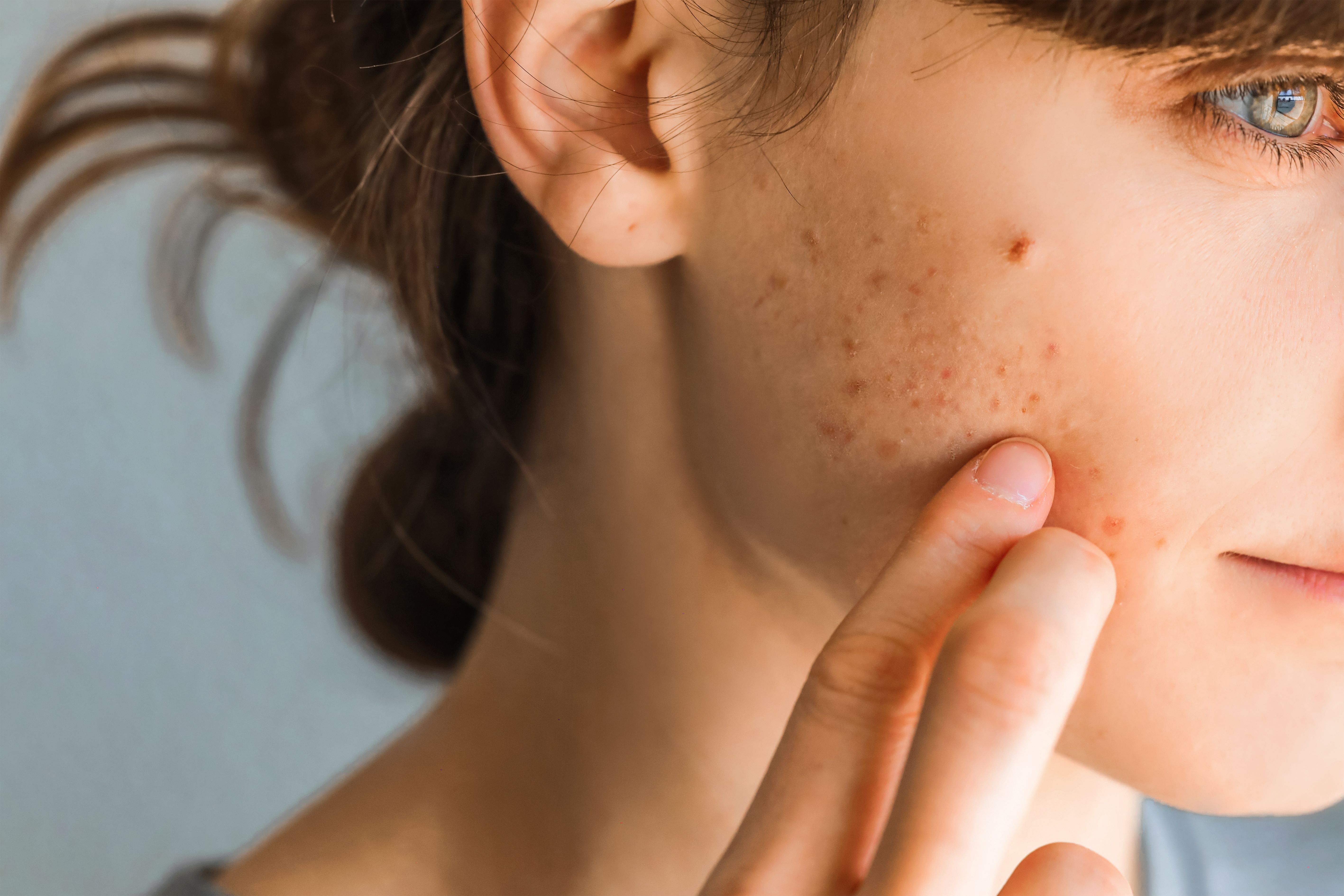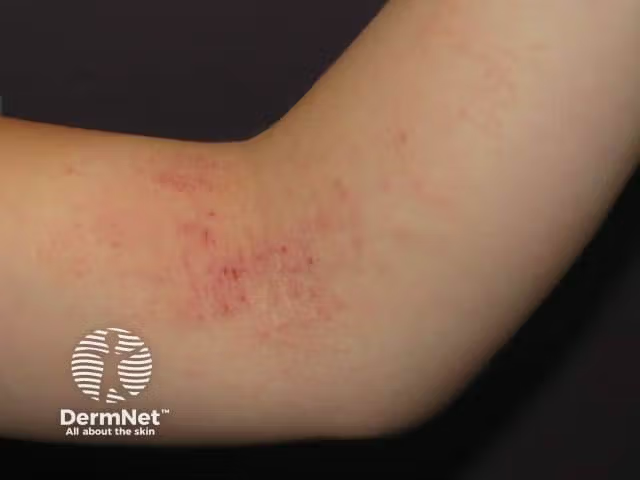- Case-Based Roundtable
- General Dermatology
- Eczema
- Chronic Hand Eczema
- Alopecia
- Aesthetics
- Vitiligo
- COVID-19
- Actinic Keratosis
- Precision Medicine and Biologics
- Rare Disease
- Wound Care
- Rosacea
- Psoriasis
- Psoriatic Arthritis
- Atopic Dermatitis
- Melasma
- NP and PA
- Skin Cancer
- Hidradenitis Suppurativa
- Drug Watch
- Pigmentary Disorders
- Acne
- Pediatric Dermatology
- Practice Management
- Prurigo Nodularis
- Buy-and-Bill
News
Article
Developing Personalized Approaches for Atopic Dermatitis Treatment
Author(s):
Tina Bhutani-Jacques, MD, highlighted the importance of individualized and informative care while building trust among patients and caregivers.

In a recent Dermatology Times Case-Based Roundtable event titled “Optimizing Atopic Dermatitis Management: Key Insights for Advancing Patient Outcomes,” Tina Bhutani-Jacques, MD, led a collaborative conversation for clinicians to explore complex cases regarding atopic dermatitis (AD) management. Bhutani, an associate professor of dermatology at the University of California, San Francisco School of Medicine, highlighted the importance of personalized and informative care while building trust among patients and caregivers.
Case 1: 27-Year-Old Female with Severe, Lifelong AD
The first case revolved around a female patient aged 27 years with severe, lifelong AD covering over 20% of her body. The patient’s symptoms included intense itching, erythema, excoriations, and weeping lesions. She has only relied on topical steroids and occasional prednisone tapers, which leads to concerns about long-term steroid use.
Bhutani and the clinicians stressed the need to build trust and manage expectations, as AD management is a long-term process. A more personalized treatment approach can be implemented by asking questions about individual triggers, bathing habits, emollient use, and overall disease progression.
The panelists also emphasized the psychological impact of AD as it has significantly affected the patient’s sleep, work, and mental health. Additionally, she has been reluctant to seek further dermatological care, which the clinicians inferred could result from past negative experiences with doctors.
Regarding therapy options, the discussion covered biologics such as dupilumab (Dupixent; Regeneron and Sanofi), tralokinumab (Adbry; LEO Pharma), and lebrikizumab (Ebglyss; Lilly). Combining these systemic therapies with topical treatments could be a great “jump start.” However, it is important to address any patient fears about topical steroid use by emphasizing the safety and effectiveness of proper usage while acknowledging potential adverse events.
The patient utilized dupilumab for 16 weeks and saw a 70% reduction in Eczema Area and Severity Index (EASI) score. She also had reduced itching, better sleep, enhanced work performance, and more social interaction, with only a mild adverse event of conjunctivitis, managed with artificial tears and an ophthalmology referral.
Case 2: 36-Year-Old Female with a History of AD on the Hands
The second case was that of a woman aged 36 years with moderate AD on her hands, arms, and trunk. The patient had a history of AD since childhood along with a family history of atopic conditions. However, she had recently experienced a worsening of symptoms that included persistent itching, redness, and discomfort, especially on her hands. Bhutani and the panelists first determined the patient’s occupational and environmental history to identify potential triggers such as dishwashing, frequent handwashing, and exposure to irritants.
Some topical options include corticosteroids, crisaborole, calcineurin inhibitors (tacrolimus, pimecrolimus), roflumilast, and topical Janus kinase inhibitors such as ruxolitinib (Opzelura; Incyte). The upcoming availability of topical tapinarof (Vtama; Organon) was also mentioned. The clinicians also noted the challenges associated with topical treatments, like greasy texture, application frequency, and the need for more handwashing, which can interfere with patient adherence.
Patch testing was noted as a possible recommendation for patients who are skeptical of topical steroids, based on misinformation or prior negative experiences. Phototherapy (narrowband UV-B) is also discussed as a potential alternative, although accessibility, time commitment, and insurance coverage must be considered. It is crucial for doctors to explain proper usage and acknowledge patient concerns about any treatments on the hands.
After 8 weeks of treatment with a nonsteroidal topical medication, the patient saw a 50% reduction in EASI score with less itching, better sleep, and no adverse effects. Her anxiety regarding topical treatments also decreased.
Case 3: Unique Treatment Challenges for a Pediatric Patient
The final case involved a 7-year-old male with moderate to severe AD on 12% of his body surface area, specifically his arms and trunk. He experiences persistent itching and sleep difficulties, and is below the 50th percentile for height, indicating potential growth impairment due to poorly controlled AD. He has a history of relapsing and remitting AD since he was 6 months old.
The conversation began by addressing the unique challenges associated with treating pediatric patients. It can be difficult to achieve full adherence in young children while also navigating concerns and preferences of parents. Clinicians need to consider the impact of the disease on the entire family dynamic.
Previous treatment approaches for pediatric AD included phototherapy, methotrexate, bleach baths, and the “sandwich method” for topical steroids. Parents may be hesitant about injectable medications like dupilumab. Bhutani and the panelists emphasized the importance of planting the seed early, building trust, and emphasizing the long-term safety of biologics, as uncontrolled AD can lead to comorbidities.
More frequent follow-up visits are recommended early in treatment to provide support for both the child and parents, even before the medication takes full effect. These “cheerleading visits” help build trust and address any concerns. Support resources like nurse ambassador programs and online materials from the American Academy of Dermatology and the National Eczema Association are also great options.
Almost clear skin and a 50% improvement in EASI score were observed after 16 weeks of holistic treatment with dupilumab. The patient is sleeping better, enjoying daily activities, and tolerating the injections very well. Additionally, the parents’ anxiety regarding treatment has decreased.





